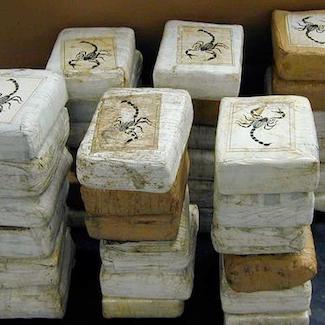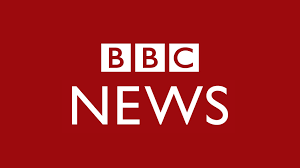Hezbollah’s Global Networks and Latin American Cocaine Trade
Mahmut Cengiz and Camilo Pardo-Herrera
Hezbollah is a globally-networked organization that has been involved in various political, criminal, and terrorist activities for nearly 40 years. The variety of its activities and functions makes it a complex case, creating debates on how the organization can be labeled, whether it is a surrogate organization of Iran in the conflict zones, a terrorist organization targeting predominantly Jews, a smuggling group dominating global cigarette smuggling networks, a money laundering group, or a drug trafficking organization involved in the worldwide cocaine trade.[1] Heavily influenced by the Iranian regime, the group has spread its influence in the Middle East, Latin America, and the United States. After detailing its origins, financial resources, and global activities, this article focuses explicitly on how Hezbollah is involved in cocaine trade from Latin America.[2]

Colombian Cocaine Seized by DEA (Public Domain: US Drug Enforcement Administration)
Hezbollah’s Origins and Financial Resources
Hezbollah was formed during Lebanon’s fifteen-year civil war in 1982 The settlement of Palestinian groups in the late 1970s affected the demographics of Lebanon, and the Sunni population increasingly grew against Shiites and Christians. The fact that these groups began to use southern Lebanon as a base to attack Israel resulted in its occupation. Moreover, those years recorded the discrimination and marginalization of the Shiite community under the rule of the Christian minority. Backed by the newly-established regime in Iran that resulted from the 1979 revolution that overthrew the Pahlavi dynasty, Lebanese Shiites took up arms against the Israeli occupation. Islamic Revolutionary Guard Corps (IRGC or Pasdaran), a private army founded by Ruhollah Khomeini, tasked with protecting the Islamic Revolution, provided funds, trained Shiite militias, and helped form Hezbollah. The group carried its activities beyond the borders of Lebanon becoming a vital asset to Iran, and serving its proxies throughout the Middle East.
Very quickly, Hezbollah became a transnational and transregional organization funded by various resources. First, Iran provides arms and money for the organization. According to the Department of State’s Country Reports on Terrorism 2020, Hezbollah receives $700 million annually from Iran.[3] Second, the group, which is not fully sanctioned by EU countries, collects millions of dollars from its loyalists in the United States and Europe. Third, extortion contributes to Hezbollah’s revenue, influencing the businesses run by members of the Lebanese diaspora on how much they must pay, Hezbollah builds connections with and exploiting diaspora communities in Africa and Latin Africa. Fourth, extracting resources from commercial enterprises and agriculture enable Hezbollah’s supporters to launder money for the organization. Fifth, financial crimes, exploiting the banking system allows the organization to earn revenue. For example, the Lebanese Canadian Bank laundered hundreds of millions of drug money for Hezbollah, laundering through banks in the US. Finally, Hezbollah is directly involved in criminal activities, such as the drug trade and cigarette smuggling, through which it makes a massive amount of money.[4]
Hezbollah’s Global Networks
Hezbollah is a global organization predominantly active in the Middle East, Latin America, and the United States. In the Middle East, Hezbollah is a Shiite Muslim political party and militant group based in Lebanon. It is known as “a state within the state” due to its extensive security apparatus, political organization, and social services network.[5] US government sources have labeled Hezbollah as a surrogate, puppet, and the vanguard of an Iranian-influenced revolutionary movement. It is Iran’s most essential and longest-standing non-state partner.[6] Hezbollah moved its vital personnel from positions focusing on Israel to Iraq, Yemen, and Syria, acting as a regional posture supporting Iranian interests. In the wake of the assassination of IRGC-QF commander General Qasem Soleimani, Hezbollah has taken a leadership role in coordinating Shi’a militant proxies in the Middle East.[7]
The group has been designated as a terrorist organization by many countries, including the US, Argentine, and Paraguay, and is still heavily involved in terrorist attacks in the Middle East. The Global Terrorism and Trends Analysis Center (GTTAC) database recorded Hezbollah’s 44 attacks in Israel, Lebanon, and Syria between 2018 and 2022. The examination dataset revealed that 18 of these attacks happened in Israel and targeted Israeli border officials, launching mortars, rockets, and missiles that landed in Israeli territory. In Lebanon, the group was the perpetrator of 12 attacks in the same period, where the group members opened fire on law enforcement, targeted rival political parties, clashed with Sunni residents, and targeted protesters and journalists. In Syria, Hezbollah is under the strict command of IRGC and aims to maintain Bashar al-Assad’s regime. The group was involved in 14 attacks in the same period, where it had armed confrontations with ISIS militants, looted shops in Syria, and targeted Turkey- and Russia-backed rebel groups as well as Turkish military vehicles.[8]
Hezbollah’s involvement in illicit activities have significantly grown in the past couple of decades. Its participation in cocaine networks has expanded since the project Cassandra, a decade-long operation launched in 2007 that aimed to halt the group’s traffic of drugs into the US and Europe.[9] In addition to its criminal activities in West Africa,[10] Europe,[11] and Latin America, the organization has also strong drug trade networks in the Middle East. For example, it is involved in Captagon trafficking in the laboratories along the Lebanese and Syrian border.[12] In addition, Turkey documented drug trafficking cases that demonstrate Hezbollah’s links with Turkish drug traffickers.[13]
In the United States, Hezbollah has attempted to target the US military and law enforcement. For example, in 2018, two Hezbollah operatives plotting attacks in Michigan and New York were arrested.[14] Furthermore, court cases portray that Hezbollah was involved in cigarette smuggling in the US. In one of these cases, a Hezbollah cell trafficked cigarettes from North Carolina to Michigan, which aimed to generate revenue from the difference in cigarette tax rates between the two States.[15] In a recent court case in April 2023, US prosecutors charged an alleged financier of Hezbollah who attempted to evade US sanctions imposed on him. The suspect was involved in more than $440 million in financial transactions violating sanctions, including importing goods to the United States and exporting mostly diamonds and artwork.[16]
Hezbollah in Latin America
The group’s influence in Latin America can be traced back to the most recent wave of Arab migration to the region, which coincided with the Lebanese Civil War. Currently, an estimated 18 million Latin Americans can trace their ancestry to the Arab region. Most of this population initially migrated around the turn of the 20th century, with the majority of them traveling from Syria and Lebanon. This early wave of Arab migration to South America was incentivized by the prevailing free speech in the region at the moment, and the possibility this offered intellectuals to publish their ideas free from censorship. In fact, an important number of Arab presses established in Brazil, Argentina, and other Latin American countries during these years, and played a key role in disseminating progressive ideas and promoting authors back in the Arab world.[17]
By the second half of the 20th century, the drivers of Arab migration to Latin America had shifted in nature and began to respond to the violence produced by the Lebanese Civil War (1975–1990) and the ensuing economic crisis that the country endured. In particular, the breakdown of the educational system prompted youth and family migration, as Lebanese families traditionally accorded great importance to education.[18] As families tried to reunite abroad, the increasing number of terrorist attacks in Beirut led to worldwide scrutiny of all Lebanese, and consequently, visa and nationalization procedures became much more difficult for Lebanese migrants. This prompted all those who had relocated temporarily to seek to acquire new nationalities in their host countries either through standard processes or by fraud. Access to citizenship in Latin American countries through corruption is a practice that continues to take place in the region as indicated by recent scandals in Colombia and Venezuela.[19] It was during this time that Hezbollah and Iran both exploited this refugee migration by planting numerous dual-citizen agents and recruiting sympathizers among Arab and Muslim immigrants on the American continent.
Initial terrorist acts by Hezbollah in Latin America were part of the internationalization of the Arab-Israeli conflict. The first of these was the bombing of the Israeli embassy in Buenos Aires in March 1992. The aim was to avenge the deaths of their leader Abbas al-Musawi and his five-year-old son Hussein—who were killed in an Israeli airstrike on 16 February 1992—beyond Lebanon’s borders. Slightly over two years later in 1994, a large explosion occurred at the Argentine Israelite Mutual Association (Asociación Mutual Israelita Argentina − AMIA) Jewish center, killing 85 people, and wounding an additional 150. Argentinian justice determined that the attack was planned and funded by the government of the Islamic Republic of Iran, and perpetrated by the Lebanese Hezbollah.[20]
The following years recorded the involvement of Hezbollah in terrorist activities throughout the region. For example, a group’s operative who was planning a terrorist attack in Lima was arrested by Peruvian police in 2014. In another police investigation, Chilean police disrupted a Hezbollah terrorist plot the same year. In 2017, Bolivian law enforcement seized sufficient explosive precursor material to produce a two-and-a-half-ton bomb in a Hezbollah-affiliated warehouse. In 2021, the Colombian police prevented a Hezbollah plan to assassinate an Israeli national and Americans to avenge the January killing of Iran’s Quds Force commander Qasem Soleimani.[21]
Alongside its terrorist actions, Hezbollah’s criminal activities in Latin America also date back to the early 1990s and have mainly concentrated in the Tri-Border Area (TBA) or Triple of Frontier at Brazil, Argentina, and Paraguay.[22] Official intelligence agencies point to contraband, document forging, money laundering, smuggling, software and music piracy, and the trafficking of weapons and drugs, as other sources of funding throughout the region.[23] In parallel, it has been recorded that Hezbollah’s activities also include fund-raising and proselytizing
Hezbollah and the Cocaine Trade
By the early 2000s, Hezbollah’s links had extended throughout most of the Latin American region and its presence had been recorded in Paraguay, Venezuela, Ecuador, Peru, Bolivia, Argentina, Brazil, and Chile.[24] At this time, as global demand for illegal drugs continued to increase, the organization began to look into the cocaine trade as a means to fund its activities. The first clear indication of Hezbollah’s direct links to the drug trade dates back to the early 2000s, when authorities learned of an international cocaine smuggling and money laundering ring, led by a Hezbollah financier named Chekry Harb.[25]
Harb’s operations initially linked Colombia’s Oficina de Envigado (Envigado Office), right-wing paramilitary groups, and the Revolutionary Armed Forces of Colombia (Fuerzas Armadas Revolucionarias de Colombia – FARC), with a corrupt ring in Jordan’s Aqaba port and a smuggling organization that took it overland to Syria.[26] However, given the fluctuating nature of the international drug market, and the ensuing changing dynamics at the production stage, Hezbollah’s links to the trafficking of illegal drugs from Colombia would constantly mutate over the years.
In the early 2000s, when Harb’s activities were identified, the cocaine production market in Colombia was highly concentrated in a handful of large, well-established, hierarchical organizations. However, as a consequence of law enforcement during the last couple of decades, the cocaine manufacture and distribution business has dispersed into a myriad of smaller and relatively independent groups operating horizontally, most of them splintering from the historical cartels, and incentivized by the persistence of global demand.
This is for example, how the Medellin Cartel emerged from the Oficina de Envigado after Pablo Escobar’s death, and later splintered into a series of paramilitary groups, which in turn, following their demobilization in 2005, splintered again into a dozen other groups. Today, one of these groups, the Gaitanista Self-Defense Force of Colombia (Autodefensas Gaitanistas de Colombia – AGC), also known as the Gulf Clan, is one of the key players in today’s cocaine distribution market.
In the same sense, the demobilization of the FARC in 2016 produced a series of splinter groups that went on to manage smaller portions of the different stages of cocaine business in their areas of influence. At least a dozen of such groups—known variously as FARC dissidents or Bacrim (Bandas Criminales)—have been identified, and although they act independently from each other, two main factions have emerged in the country through alliances among them—the so-called “Estado Mayor Central” led by AKA Ivan Mordisco, and the “Segunda Marquetalia” faction led by AKA Iván Marquez.
Read full article at
https://smallwarsjournal.com/jrnl/art/hezbollahs-global-networks-and-latin-american-cocaine-trade

















